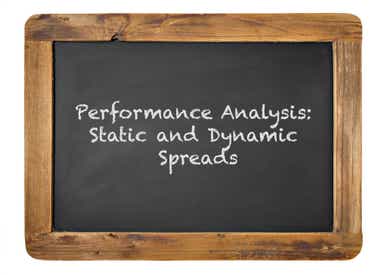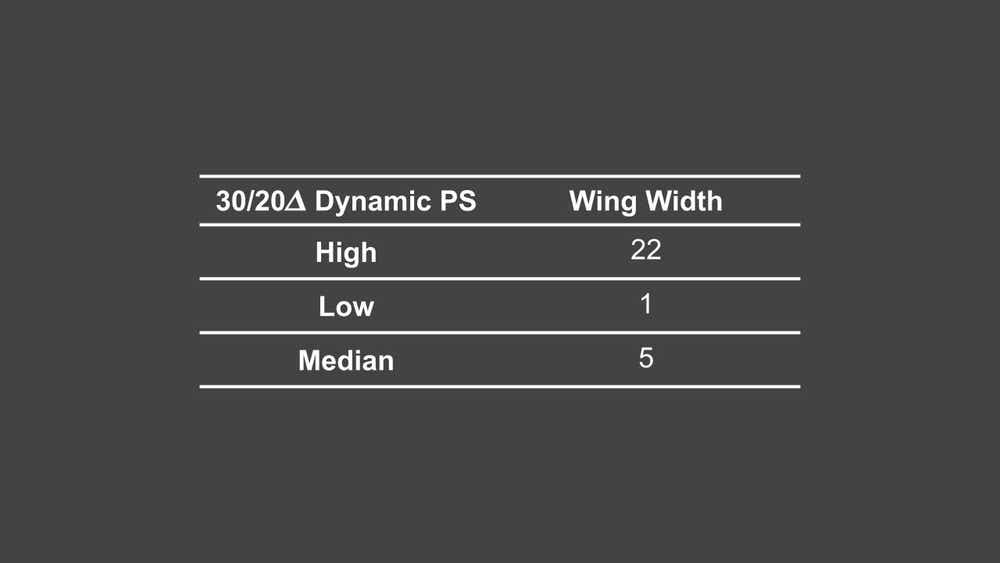Performance Analysis: Static and Dynamic Spreads

Performance Analysis: Static and Dynamic Spreads
By:Kai Zeng
Maximizing returns and managing risks require understanding the nuances of different options trading strategies
- Static and dynamic spreads are two popular approaches for trading SPY options.
- Dynamic spreads tend to generate slightly higher returns compared to static spreads.
- Dynamic spreads also carry the potential for larger losses due to their wider wings.
Understanding the nuances of different options trading strategies is crucial for maximizing returns and managing risks.
In the case of trading SPDR S&P 500 ETF Trust (SPY) options, two popular approaches are static and dynamic spreads, specifically selling put spreads. Comparing the performance of these strategies gives traders valuable insights for refining their trading methods.
Traders typically sell put spreads with deltas between 20 and 30 and buy wings of various widths to match their desired risk level. Our findings indicate that the median wing width for 30/20 delta SPY put spreads is just below 5, which is comparable to a 5-wide static put spread on average.

Comparison of spreads
This information lets us compare the performance of SPY 30/20 delta put spreads (dynamic) and 30-delta $5-wide put spreads (static) with 45 days to expiration. We can then analyze the similarities and differences between these strategies under two management approaches: holding to expiration or closing at 21 days to expiration (DTE).
The results show that dynamic spreads tend to generate slightly higher returns compared to static spreads, but they also carry the potential for larger losses due to their wider wings. However, when considering the overall performance, dynamic spreads closely mirror that of static spreads.
.jpg?format=pjpg&auto=webp&quality=50&width=1000&disable=upscale)
What if we move strikes further out?
Now, let's consider moving the strikes further out to 20/10 delta put spreads.
The median wing width for these spreads is slightly greater than five, like a five-wide static put spread. Our study reveals that dynamic spreads with wider wings can sometimes result in heavier losses compared to static spreads.
.jpg?format=pjpg&auto=webp&quality=50&width=1000&disable=upscale)
On average, smaller delta dynamic spreads (20/10 delta) have wider wings than larger delta spreads (30/20 delta), leading to slightly larger losses.
However, these smaller delta spreads often have exceptionally high success rates, making them an appealing choice for traders who can handle the associated risk.

One consistent finding is that managing positions at 21 DTE consistently outperforms holding them until expiration. This approach not only improves return rates but also provides better control over potential losses.
The key takeaway for traders is that while the returns of dynamic and static spread strategies are quite similar, dynamic spreads offer a slight edge in terms of returns. However, this comes with the caveat of increased average losses due to the wider wings. Implementing a disciplined approach by managing trades at 21 DTE proves to be an effective method for improving returns and maintaining control over losses in both scenarios.
Kai Zeng, director of the research team and head of Chinese content at tastylive, has 20 years of experience in markets and derivatives trading. He cohosts several live shows, including From Theory to Practice and Building Blocks. @kai_zeng1
For live daily programming, market news and commentary, visit tastylive or the YouTube channels tastylive (for options traders), and tastyliveTrending for stocks, futures, forex & macro.
Trade with a better broker, open a tastytrade account today. tastylive, Inc. and tastytrade, Inc. are separate but affiliated companies.
Options involve risk and are not suitable for all investors. Please read Characteristics and Risks of Standardized Options before deciding to invest in options.
tastylive content is created, produced, and provided solely by tastylive, Inc. (“tastylive”) and is for informational and educational purposes only. It is not, nor is it intended to be, trading or investment advice or a recommendation that any security, futures contract, digital asset, other product, transaction, or investment strategy is suitable for any person. Trading securities, futures products, and digital assets involve risk and may result in a loss greater than the original amount invested. tastylive, through its content, financial programming or otherwise, does not provide investment or financial advice or make investment recommendations. Investment information provided may not be appropriate for all investors and is provided without respect to individual investor financial sophistication, financial situation, investing time horizon or risk tolerance. tastylive is not in the business of transacting securities trades, nor does it direct client commodity accounts or give commodity trading advice tailored to any particular client’s situation or investment objectives. Supporting documentation for any claims (including claims made on behalf of options programs), comparisons, statistics, or other technical data, if applicable, will be supplied upon request. tastylive is not a licensed financial adviser, registered investment adviser, or a registered broker-dealer. Options, futures, and futures options are not suitable for all investors. Prior to trading securities, options, futures, or futures options, please read the applicable risk disclosures, including, but not limited to, the Characteristics and Risks of Standardized Options Disclosure and the Futures and Exchange-Traded Options Risk Disclosure found on tastytrade.com/disclosures.
tastytrade, Inc. ("tastytrade”) is a registered broker-dealer and member of FINRA, NFA, and SIPC. tastytrade was previously known as tastyworks, Inc. (“tastyworks”). tastytrade offers self-directed brokerage accounts to its customers. tastytrade does not give financial or trading advice, nor does it make investment recommendations. You alone are responsible for making your investment and trading decisions and for evaluating the merits and risks associated with the use of tastytrade’s systems, services or products. tastytrade is a wholly-owned subsidiary of tastylive, Inc.
tastytrade has entered into a Marketing Agreement with tastylive (“Marketing Agent”) whereby tastytrade pays compensation to Marketing Agent to recommend tastytrade’s brokerage services. The existence of this Marketing Agreement should not be deemed as an endorsement or recommendation of Marketing Agent by tastytrade. tastytrade and Marketing Agent are separate entities with their own products and services. tastylive is the parent company of tastytrade.
tastyfx, LLC (“tastyfx”) is a Commodity Futures Trading Commission (“CFTC”) registered Retail Foreign Exchange Dealer (RFED) and Introducing Broker (IB) and Forex Dealer Member (FDM) of the National Futures Association (“NFA”) (NFA ID 0509630). Leveraged trading in foreign currency or off-exchange products on margin carries significant risk and may not be suitable for all investors. We advise you to carefully consider whether trading is appropriate for you based on your personal circumstances as you may lose more than you invest.
tastycrypto is provided solely by tasty Software Solutions, LLC. tasty Software Solutions, LLC is a separate but affiliate company of tastylive, Inc. Neither tastylive nor any of its affiliates are responsible for the products or services provided by tasty Software Solutions, LLC. Cryptocurrency trading is not suitable for all investors due to the number of risks involved. The value of any cryptocurrency, including digital assets pegged to fiat currency, commodities, or any other asset, may go to zero.
© copyright 2013 - 2025 tastylive, Inc. All Rights Reserved. Applicable portions of the Terms of Use on tastylive.com apply. Reproduction, adaptation, distribution, public display, exhibition for profit, or storage in any electronic storage media in whole or in part is prohibited under penalty of law, provided that you may download tastylive’s podcasts as necessary to view for personal use. tastylive was previously known as tastytrade, Inc. tastylive is a trademark/servicemark owned by tastylive, Inc.